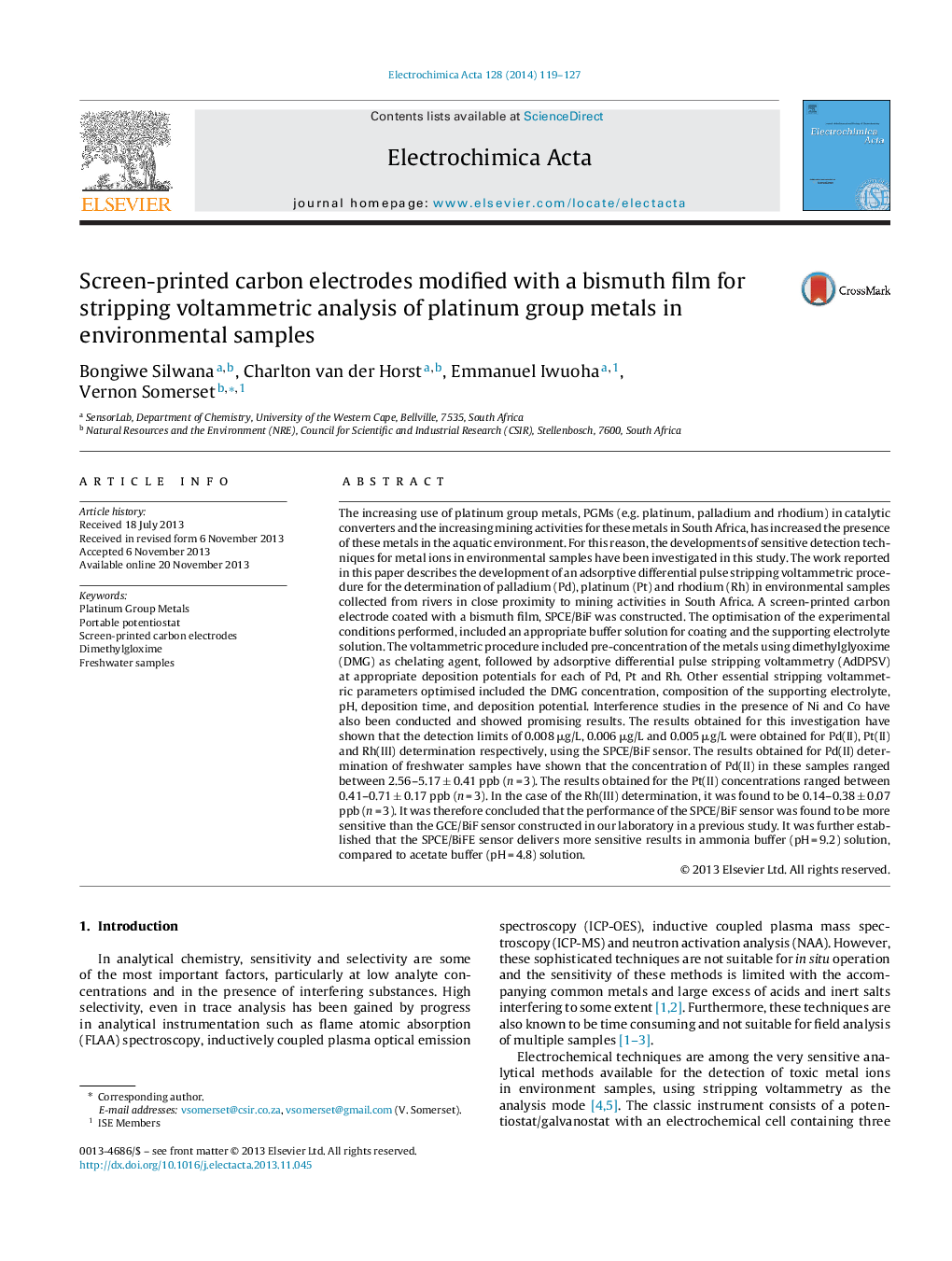| کد مقاله | کد نشریه | سال انتشار | مقاله انگلیسی | نسخه تمام متن |
|---|---|---|---|---|
| 186081 | 459607 | 2014 | 9 صفحه PDF | دانلود رایگان |
The increasing use of platinum group metals, PGMs (e.g. platinum, palladium and rhodium) in catalytic converters and the increasing mining activities for these metals in South Africa, has increased the presence of these metals in the aquatic environment. For this reason, the developments of sensitive detection techniques for metal ions in environmental samples have been investigated in this study. The work reported in this paper describes the development of an adsorptive differential pulse stripping voltammetric procedure for the determination of palladium (Pd), platinum (Pt) and rhodium (Rh) in environmental samples collected from rivers in close proximity to mining activities in South Africa. A screen-printed carbon electrode coated with a bismuth film, SPCE/BiF was constructed. The optimisation of the experimental conditions performed, included an appropriate buffer solution for coating and the supporting electrolyte solution. The voltammetric procedure included pre-concentration of the metals using dimethylglyoxime (DMG) as chelating agent, followed by adsorptive differential pulse stripping voltammetry (AdDPSV) at appropriate deposition potentials for each of Pd, Pt and Rh. Other essential stripping voltammetric parameters optimised included the DMG concentration, composition of the supporting electrolyte, pH, deposition time, and deposition potential. Interference studies in the presence of Ni and Co have also been conducted and showed promising results. The results obtained for this investigation have shown that the detection limits of 0.008 μg/L, 0.006 μg/L and 0.005 μg/L were obtained for Pd(II), Pt(II) and Rh(III) determination respectively, using the SPCE/BiF sensor. The results obtained for Pd(II) determination of freshwater samples have shown that the concentration of Pd(II) in these samples ranged between 2.56–5.17 ± 0.41 ppb (n = 3). The results obtained for the Pt(II) concentrations ranged between 0.41–0.71 ± 0.17 ppb (n = 3). In the case of the Rh(III) determination, it was found to be 0.14–0.38 ± 0.07 ppb (n = 3). It was therefore concluded that the performance of the SPCE/BiF sensor was found to be more sensitive than the GCE/BiF sensor constructed in our laboratory in a previous study. It was further established that the SPCE/BiFE sensor delivers more sensitive results in ammonia buffer (pH = 9.2) solution, compared to acetate buffer (pH = 4.8) solution.
Journal: Electrochimica Acta - Volume 128, 10 May 2014, Pages 119–127
